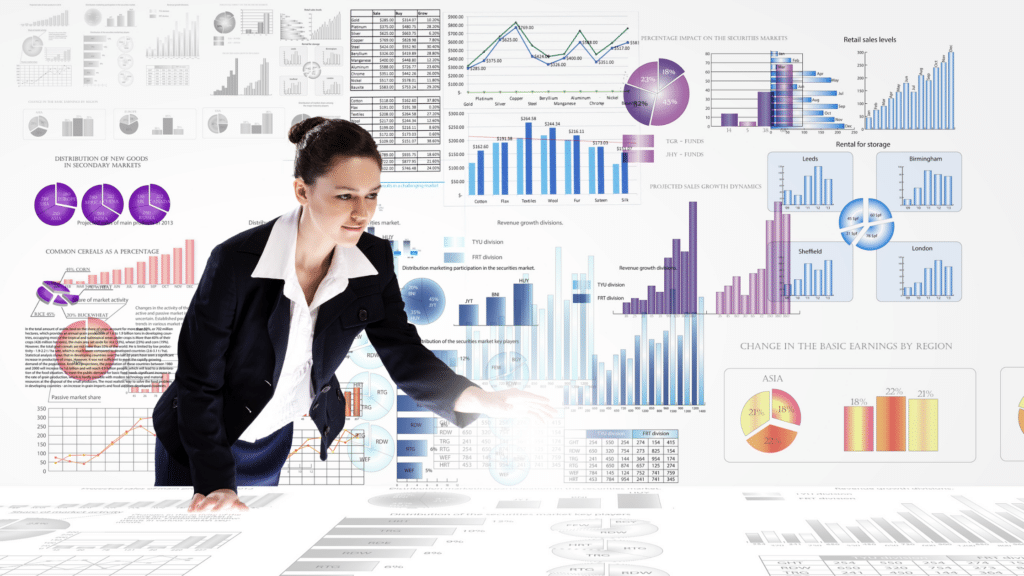Harnessing the power of staffing analytics is pivotal for organizations aiming to optimize their staffing operations and make strategic, data-driven decisions. This comprehensive exploration delves into various facets where analytics is crucial in enhancing staffing strategies and overall business outcomes.
The advent of analytics has ushered in a new era of strategic decision-making and operational optimization. As organizations grapple with an ever-evolving labor market, the capacity to sift through vast datasets and extract actionable insights has become invaluable. This nuanced approach to staffing enhances the precision of talent acquisition and paves the way for a deeper understanding of workforce dynamics, enabling leaders to anticipate trends and adapt strategies accordingly.
At the heart of this transformation is integrating advanced analytics tools, which facilitate a more granular analysis of recruitment processes, candidate engagement, and performance metrics. By leveraging technologies such as machine learning and AI, staffing firms can refine their talent search, tailor their engagement strategies, and ultimately, improve the quality of hires. The ability to harness these insights drives efficiency and fortifies the staffing strategy against the unpredictability of the job market, ensuring organizations remain agile and resilient.

Applying staffing analytics extends beyond talent acquisition, offering a comprehensive view of the entire employment lifecycle. From identifying skill gaps within existing teams to forecasting future staffing needs, analytics serves as a linchpin in developing a robust workforce strategy. As staffing leaders navigate this data-driven landscape, the emphasis shifts from reactive hiring practices to proactive workforce planning, marking a significant leap toward achieving operational excellence and sustained business growth.
The Role of Analytics in Staffing
Analytics profoundly impacts staffing, enabling better hiring decisions and improved retention rates. For instance, tools like Applicant Tracking Systems (ATS) provide critical data on recruitment performance, helping organizations identify the most effective recruitment sources and streamline hiring processes. Data visualization tools such as Tableau further aid in presenting complex datasets in an easily understandable format, facilitating informed decision-making about hiring trends and workforce demographics.
Predictive analytics tools, leveraging machine learning algorithms, predict future trends such as potential skill shortages, guiding organizations in planning staffing and training programs to meet future demands effectively. Real-world applications of these technologies have shown significant benefits. For example, companies like Hilton Worldwide and Google have utilized data analytics to identify factors contributing to employee turnover and traits of successful employees, enhancing employee retention and hiring processes.
Beyond enhancing recruitment and retention, staffing analytics also play a pivotal role in optimizing workforce deployment and management. By analyzing performance data alongside operational metrics, organizations can identify which candidates are likely to succeed and how to position them most effectively within teams and projects. This strategic alignment between talent capabilities and business needs leads to higher productivity, improved team dynamics, and, ultimately, more successful project outcomes.
Furthermore, staffing analytics can uncover hidden patterns in workforce data, offering insights into employee engagement levels, potential leadership candidates, and areas where additional training could yield significant benefits. By leveraging these insights, staffing leaders can cultivate a more dynamic, engaged, and high-performing workforce tailored to the evolving demands of the market and the organization’s strategic objectives.
Challenges and Solutions in Implementing Staffing Analytics
Despite the clear advantages, organizations face challenges in adopting staffing analytics, including ensuring data quality and addressing privacy concerns. A strategic approach, incorporating robust analytics platforms, and fostering a culture of data literacy is essential for overcoming these obstacles and realizing the full potential of staffing analytics.
In addition to data quality and privacy concerns, organizations embarking on staffing analytics initiatives often grapple with integrating disparate data sources and ensuring stakeholder buy-in. Data fragmentation across different HR systems, payroll platforms, and other software can create significant barriers to developing a cohesive analytics strategy. Without a unified data ecosystem, extracting meaningful insights becomes a cumbersome process, hampered by data silos and inconsistent metrics. To address this challenge, organizations can invest in middleware solutions or adopt integrated HR platforms that facilitate seamless data consolidation and analysis.
Moreover, securing support from all levels of the organization is crucial for successfully implementing staffing analytics. Resistance to change, particularly from those accustomed to traditional recruitment and workforce management practices, can hinder analytics initiatives. Leaders can mitigate this resistance by demonstrating the tangible benefits of analytics through pilot projects and case studies, emphasizing the positive impact on decision-making speed, accuracy, and overall business performance. Engaging stakeholders early in the process and fostering a collaborative approach to analytics adoption encourages a shared vision for leveraging data to drive strategic staffing outcomes.
Future Directions in Staffing Analytics
The future of staffing analytics is promising, with advancements in AI and machine learning offering more sophisticated insights and automation opportunities. As the staffing industry evolves, organizations that continue to invest in and adapt their analytics capabilities will lead to innovation and service excellence.
Staffing analytics is a transformative tool for organizations, enabling a more strategic approach to staffing and workforce planning. By leveraging technology and data-driven insights, staffing leaders can make informed decisions that drive business success and competitive advantage.
For further details on how staffing analytics can revolutionize your organization, explore the insights provided by RemoteBase, NetSuite, S.J.Hemley Marketing, Human Resources Today, and The Staffing Stream. These sources offer in-depth analysis and examples of how data analytics is successfully implemented in staffing and workforce planning.

